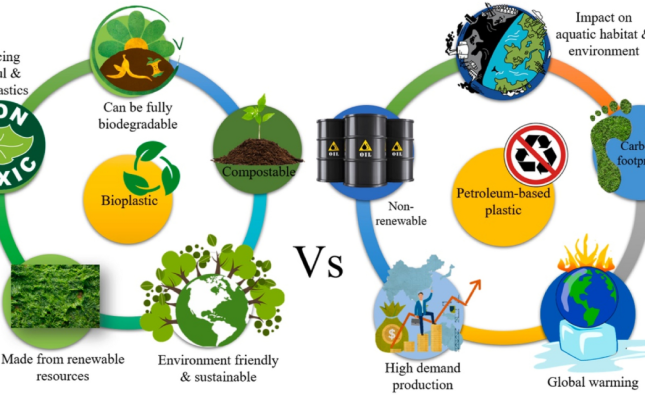
Are you looking for a way to improve your health and reduce your impact on the environment? Flexitarianism may just be the answer. This rising trend of plant-based eating is gaining popularity as more people seek a healthy and sustainable lifestyle. In this blog post, we will explore what flexitarianism is all about, its benefits and drawbacks, as well as some delicious recipes that can help you get started on this path. Join us in discovering why plant-based eating will likely become the norm by 2023!
What is Flexitarianism?
Flexitarianism is a term coined to describe a diet that is mostly plant-based but still allows for some animal products in moderation. Flexitarians aim to eat more plants and less meat without completely eliminating it from their diets.
The flexitarian diet offers the benefits of vegetarianism while allowing for some flexibility, making it an ideal option for those who find it hard to give up meat altogether. This approach can help reduce the risk of chronic diseases associated with high consumption of animal products, such as heart disease, diabetes, and certain cancers.
Flexitarians focus on consuming whole foods such as fruits, vegetables, legumes, nuts and seeds instead of processed foods or refined carbohydrates. They also consume moderate amounts of dairy products and eggs along with fish or poultry in small portions.
By choosing food sources that have lower environmental impact than conventional factory-farmed meats like grass-fed beef or pastured chicken they also contribute towards sustainability efforts by reducing their carbon footprint on the environment.
Pros and Cons of a Flexitarian Diet
Flexitarianism is gaining popularity among people who want to incorporate more plant-based foods into their diets while still allowing for occasional meat consumption. This type of diet has its benefits and drawbacks, much like any other eating style.
One of the main advantages of a flexitarian diet is that it encourages individuals to eat a wide variety of foods, including fruits, vegetables, whole grains, legumes, and nuts. These foods are packed with essential nutrients and can help lower the risk of chronic diseases such as heart disease and diabetes.
Another benefit is that it allows for flexibility in food choices. Unlike strict vegetarian or vegan diets, flexitarians can still enjoy animal products occasionally without feeling guilty or deprived. This makes it easier for some people to stick with this kind of lifestyle long-term.
On the downside, a flexitarian diet may not provide enough protein for those who engage in intense physical activity regularly. It also requires careful planning to ensure adequate nutrient intake since eliminating meat from one’s diet could lead to deficiencies in certain vitamins and minerals such as iron or vitamin B12.
Furthermore, some critics argue that labeling oneself as “flexitarian” promotes consumerism rather than actual dietary change towards sustainable practices.
Though – when done correctly – following a flexitarian diet can bring many health benefits while reducing environmental impact.
What Foods to Eat on a Flexitarian Diet?
When it comes to what foods to eat on a flexitarian diet, the options are quite diverse. Flexitarians typically consume mostly plant-based foods but also incorporate some animal products in moderation.
Vegetables and fruits should make up a significant portion of a flexitarian’s diet. These nutrient-dense foods provide essential vitamins, minerals, and antioxidants that support overall health.
Whole grains such as quinoa, brown rice, and oats are excellent sources of fiber and complex carbohydrates that help keep you feeling full and satisfied. Legumes like lentils, chickpeas, and black beans are high in protein while being low in fat.
Dairy products can be included on occasion for their calcium content. Eggs can also be consumed but should be limited due to their cholesterol levels. When choosing meat or seafood options, lean proteins like chicken breast or salmon are preferred over red meats or processed meats.
A flexitarian diet emphasizes whole foods with minimal processing while allowing for occasional indulgences within moderation.
Flexitarian Recipes
Flexitarianism is not just a dietary choice, it’s also a lifestyle. As more people are embracing this way of eating, the demand for delicious and healthy flexitarian recipes has skyrocketed. Fortunately, there’s no shortage of tasty and nutritious meals that can be made without meat.
One example of a popular flexitarian recipe is black bean burgers. Made with canned black beans, onions, garlic, breadcrumbs and spices like cumin and chili powder, these veggie burgers pack in plenty of flavor and protein. They’re perfect for grilling or pan-frying.
Another favorite among flexitarians is roasted vegetable pasta. This dish typically includes seasonal vegetables like zucchini, cherry tomatoes and bell peppers that are roasted until tender. The veggies are then tossed with whole-grain pasta in a light tomato sauce flavored with herbs like basil or oregano.
For those looking to add some international flair to their meals, stir-fried tofu with vegetables is an excellent option. Tofu absorbs flavors easily so it can be seasoned with soy sauce or curry paste before being stir-fried alongside broccoli florets or sliced bell pepper strips.
In terms of breakfast options for flexitarians , overnight oats mixed with almond milk and topped off with fresh berries , chia seeds , nuts could make one feel satiated till lunch time .
The possibilities are endless when it comes to creating delicious flexitarian recipes . With some creativity , simple ingredients from your local grocery store could turn into delightful dishes which cater not only to vegetarians but also meat eaters alike !
Alternatives to the Flexitarian Diet
While the flexitarian diet is a great way to incorporate more plant-based foods into your diet, it’s not for everyone. Some people may have dietary restrictions or simply prefer other types of diets. Here are some alternative diets that you can consider:
1. Vegetarian Diet: A vegetarian diet excludes all meat and seafood but includes dairy products and eggs.
2. Vegan Diet: A vegan diet excludes all animal products including meat, dairy, and eggs.
3. Paleo Diet: The paleo diet focuses on consuming whole foods that were available during the Paleolithic era such as lean meats, fish, fruits, vegetables and nuts.
4. Mediterranean Diet: The Mediterranean diet emphasizes consuming primarily plant-based foods such as fruits, vegetables, whole grains, legumes and nuts while limiting red meat intake.
5. Ketogenic Diet: The ketogenic (keto) diet involves high-fat consumption with moderate protein intake while keeping carbohydrate intake very low.
Ultimately choosing the right type of diet for yourself depends on your personal preferences and health goals. It’s important to consult with a healthcare professional before making any significant changes to your dietary habits to ensure optimal nutrition levels are maintained in your body.
Conclusion
It’s clear that flexitarianism is on the rise and will continue to gain popularity in the coming years. With its focus on plant-based eating while still allowing for flexibility with animal products, it offers a sustainable and healthy approach to nutrition.
While there are certainly benefits to following a flexitarian diet, everyone has different dietary needs and preferences. It’s important to find what works best for you and your body.
At the end of the day, whether you choose to follow a strict vegan lifestyle or incorporate some meat into your meals occasionally, making conscious choices about what we eat can have positive impacts on both our health and the environment. By embracing flexitarianism as an option for more people, we can create a world where plant-based eating is not only normal but also accessible for all.










